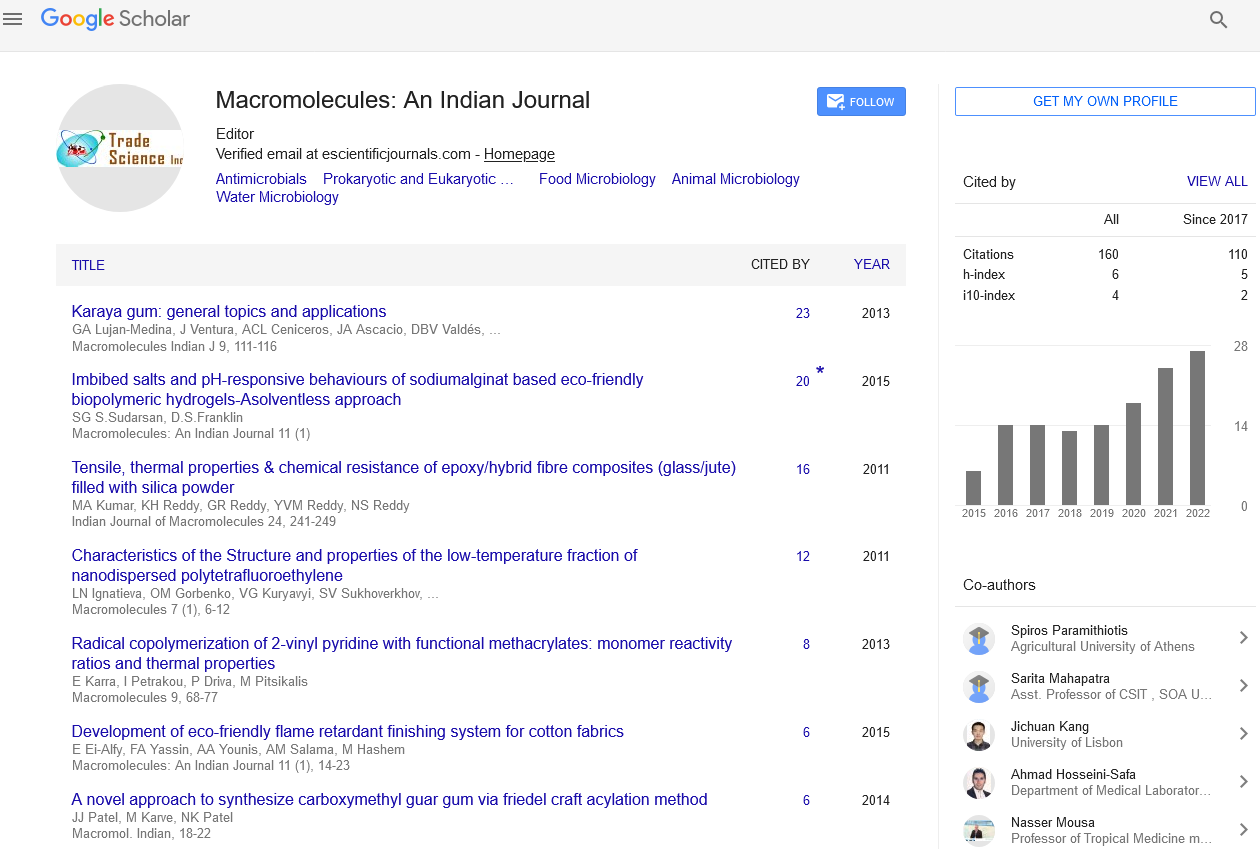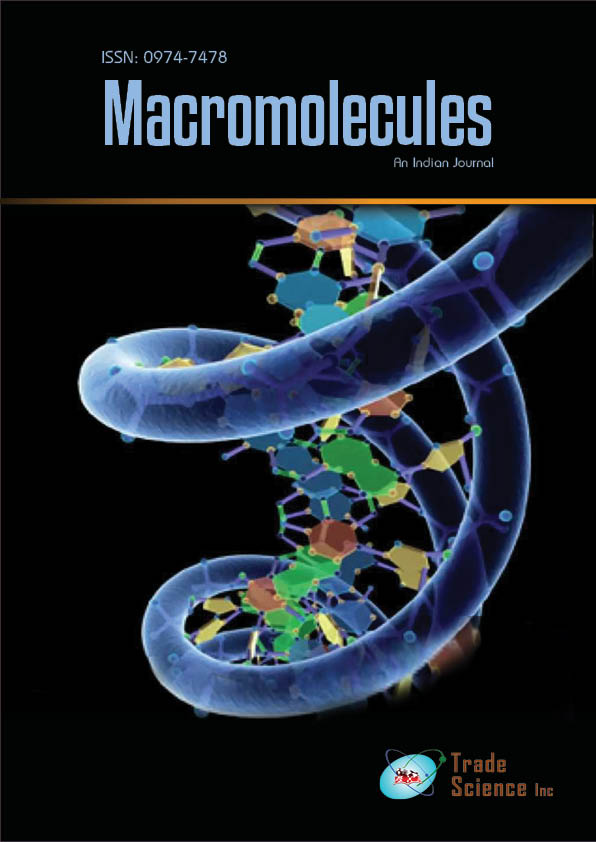Abstract
Formulation and in vitro evaluation of theophylline matrix tablets prepared by direct compression: Effect of polymer blends
Author(s): Ibrahim El-Bagory1*, Nahla Barakat2, Mohamed Ibrahim1, Fouza El-EnaziThe deformation mechanism of pharmaceutical powders, used in formulating directly compressed matrix tablets, affects the characteristics of the formed tablets. Three polymers of different deformation mechanisms were tested for their impact on theophylline directly compressed tablets namely Kollidon ® SR(KLSR, plastic deformation), Ethylcellulose (EC, elastic deformation) and Carnauba wax (CW, brittle deformation) at different compression forces. However, tablets based mainly on KL SR, the plastically deformed polymer (TN1) exhibited the highest hardness values compared to the other formulaewhich based on either blends ofKLSRwithCW, the very brittle deformed polymer. The upper detected force for TN formulae and the lower punch force were found to dependentmainly on the powder deformation. This difference is attributed to the work done during the compression phase as well as the work lost during the decompression phase. Furthermore, the release profiles of TN from formulae TN2 and TN4 that based on the composition (2KLSR: 1EC) and (1KLSR: 2EC), respectively,were consistent with different deformation mechanisms of KL SR and EC and on the physicochemical properties like the water absorptive capacity of EC. Upon increasing the weight ratio of KL SR (TN2), the release rate was greatly retarded (39.4, 37.1, 35.0 and 33.6%released after 8 h at 5, 10, 15 and 20 kN.

